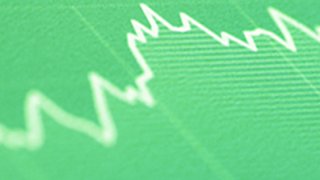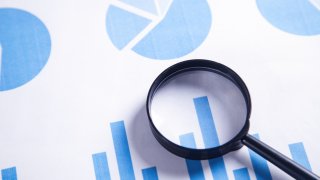Statistikk innhold
Statistics on
General government revenue and expenditure
The statistics provide information on expenditure in the central and local government sectors, broken down by expenditure type and function. It also shows how revenue is generated, such as taxes, fees, user payments, interest and dividends.
Selected figures from these statistics
- General government. Revenue and expenditure. Main aggregates. Annual. NOK millionDownload table as ...General government. Revenue and expenditure. Main aggregates. Annual. NOK million
2020 2021 2022 2023 2024 A. Revenue 1 874 942 2 449 364 3 618 188 3 191 777 3 217 991 B. Expense 1 893 299 1 932 789 2 081 911 2 265 457 2 441 004 C. Change in net worth from transactions (A-B) -18 357 516 575 1 536 277 926 320 776 987 D. Net acquisitions of non-financial assets 76 427 70 642 75 426 83 264 91 290 E. Total expenditure (B+D) 1 969 726 2 003 431 2 157 337 2 348 721 2 532 294 F. Net lending/borrowing (A-E) -94 784 445 933 1 460 851 843 056 685 697 Explanation of symbolsDownload table as ... - General government expenditure by function. Annual. NOK millionDownload table as ...General government expenditure by function. Annual. NOK million
2020 2021 2022 2023 2024 All functions 1 969 726 2 003 431 2 157 337 2 348 721 2 532 294 General public services 163 235 164 512 188 576 243 960 274 996 Defence 69 414 72 459 80 934 91 183 114 902 Public order and safety 43 740 44 929 49 396 51 598 55 149 Economic affairs 285 690 246 614 284 344 286 656 297 062 Environmental protection 33 620 35 520 40 262 42 197 43 416 Housing and community amenities 30 648 29 840 35 423 40 113 45 088 Health 288 171 320 094 338 567 362 262 379 793 Recreation, culture and religion 65 515 68 988 71 003 73 963 76 889 Education 200 794 207 213 219 688 233 566 250 111 Social protection 788 898 813 261 849 145 923 223 994 887 Explanation of symbolsDownload table as ...
About the statistics
The information under «About the statistics» was last updated 11 December 2025.
See Definitions in government finance statistics for definitions of variables and other concepts used in government finance statistics.
National accounting standards
The statistics are based on the guidelines for financial accounting in the national accounting standards System of National Accounts 2008 (SNA 2008) and European System of Accounts 2010 (ESA 2010), as well as the IMF's Government Finance Statistics Manual 2014 (GFSM 2014).
Sector classification
Each institutional sector comprises institutional units with broadly similar behaviour. The institutional units are grouped into mutually exclusive institutional sectors on the basis of economic activity, organizational structure and ownership. Institutional units are autonomous entities that are capable, in their own right, of owning assets, incurring liabilities and engaging in economic activities and in transactions with other entities. In most cases, the institutional unit is identical to the legal unit or persons or groups of persons in the form of households.
The institutional sector classification in the financial accounts is based on the recommendations of the SNA 2008 and ESA 2010.
Classification of expenditure by function
Grouping of expenditure by function or purpose is based on the UN's Classification of the Functions of Government (COFOG).
Name: General government revenue and expenditure
Topic: Public sector
Division for Public Finance
National level only.
Annual and quarterly data.
Preliminary annual figures in tables 14668, 14670 og 14671 in the Statbank are released in March after the end of the reference period. Updated figures are released in June and in December.
Annual figures in tables 14669 og 14672 are released in June after the end of the reference period. Updated figures are released in December.
Quarterly figures in table 14667 are released approximately 75-80 days after the end of the reference period.
Eurostat
OECD
IMF
Collected and revised data are stored securely by Statistics Norway in compliance with applicable legislation on data processing.
Statistics Norway can grant access to the source data (de-identified or anonymised microdata) on which the statistics are based, for researchers and public authorities for the purposes of preparing statistical results and analyses. Access can be granted upon application and subject to conditions. Refer to the details about this at Access to data from Statistics Norway.
The purpose of the statistics is to provide long time series for revenue and expenditure in general government based on the international guidelines for national accounts and government finance statistics. Further, Norway is obliged to compile and report such statistics to EU’s statistical organization – Eurostat.
There are comparable figures from 1978 to the present.
General government revenue and expenditure is part of the national accounting system, which is important for analyzing the economic development. Statistics Norway's macroeconomic models are largely based on national accounts statistics. Other users are Norges Bank, the Ministry of Finance, research institutes and media.
The statistics can, among other things, contribute to describe the total size and composition of the general government and its impact on overall demand and supply, investments and tax burden. In addition, it can be used to compare general government in Norway and other countries.
No external users have access to statistics before they are released at 8 a.m. on ssb.no after at least three months’ advance notice in the release calendar. This is one of the most important principles in Statistics Norway for ensuring the equal treatment of users.
In principle, the statistics are incorporated directly into the national accounts. General government revenue and expenditure can be found in central and local government tables in the non financial sector accounts.
The budgetary central government fiscal account is published annually and quarterly. These figures are based on the Ministry of Finance’s own definitions, which deviates from the definitions used in the national accounts and government finance statistics. In addition, annual municipal accounts and county authority accounts are published according to the definitions in the Local government act.
The statistics are developed, produced and disseminated pursuant to Act no. 32 of 21 June 2019 relating to official statistics and Statistics Norway (the Statistics Act).
The statistics are part of the national program for official statistics 2024-2027, main area Public finances.
The population includes the institutional sector general government, as it is defined in the international guidelines. This sector consists of all government units and all non-market institutions that are controlled by central or local government units. Market based non-financial and financial corporations owned by government are not included.
The principal administrative register used is the budgetary central government fiscal account collected from The Norwegian Government Agency for Financial Management. This covers a number of government units such as the Parliament, all ministries, directorates, the Norwegian Armed Forces, police and prison services, law courts, the Norwegian Labour and Welfare Service and the National Insurance Scheme. Data can also be downloaded from statsregnskapet.no.
Public hospitals, as well as the Government Pension Fund, transmit financial statements directly to Statistics Norway.
Other extra-budgetary accounts, such as financial statements from public universities and university colleges public, research institutes, pension funds are collected from statsregnskapet.no.
Government controlled cultural institutions and various public funds are collected individually – from the respective units’ webpage or by special agreement.
Municipalities, county authorities, municipal companies (KF/FKF), inter-municipal companies (IKS) and joint parish councils are obliged to submit financial statements directly to Statistics Norway, via KOSTRA.
Accrued taxes on income and wealth are based on tax statistics for personal tax payers and tax statistics for companies.
Government expenditures related to research and development are estimated on the basis of statistics on R&D in the university and college sector and R&D in the institute sector.
In principle, all accounts are included. In practice some minor accounts are not collected.
The classification of transactions in government finance statistics are based on information in the collected datasets. These datasets contain a classification of transactions by type. Taxes, fees and charges, interest revenue and dividends are all examples of revenue types – while wages and salaries, interest expense, transfers to other sectors and acquisitions of fixed assets are examples of expenditure types. In addition, most accounts contain a classification by function or chapter that gives details regarding the various purposes of government spending – health, education, culture, etc.
Controls consist mainly of checking that the accounts are in balance (i.e. that expenditures equal revenues plus financing). The individual accounts from public hospitals, municipalities, county authorities and joint parish councils are subject to a number of automatic checks when they are reported electronically to Statistics Norway. Remaining checks are done on a macro level and based on the applied characteristics.
When quarterly and preliminary annual figures are released, not all data sources are available. As a consequence, these releases are to some degree based on estimations.
No seasonal adjustments are made.
Employees of Statistics Norway have a duty of confidentiality.
Statistics Norway does not publish figures if there is a risk of the respondent’s contribution being identified. This means that, as a general rule, figures are not published if fewer than three units form the basis of a cell in a table or if the contribution of one or two respondents constitutes a very large part of the cell total.
Statistics Norway can make exceptions to the general rule if deemed necessary to meet the requirements of the EEA agreement, if the respondent is a public authority, if the respondent has consented to this, or when the information disclosed is openly accessible to the public.
More information can be found on Statistics Norway’s website under Methods in official statistics, in the ‘Confidentiality’ section.
There are comparable figures from 1978 to the present.
Government finance statistics are compiled in the same way, and according to the same framework, every year to ensure comparability over time. One tries to avoid substantial breaks in the time series by carrying out any large changes in connection with retroactive revisions.
For the central government minor breaks may occur, since the fiscal account's chart of accounts is often adjusted through resolutions in the Parliament. Breaks in the time series occur relatively seldom for the local government accounts, since the chart of accounts is established by the Local Government Act.
When quarterly and preliminary annual figures are, not all data sources are available. As a consequence, these releases are to some degree based on estimations.
For some revenue and expenditure items the specifications in the administrative registries or submitted financial statements are not good enough to satisfy the international requirements for detailing level. In addition, the chart of accounts is not always adhered to well enough.
In connection with the collected financial statements the respondents may sometimes misunderstand the questionnaires. In addition, errors can be made by Statistics Norway with regards to the classification of transactions by type or function.
When final figures are released, all accounts and other data sources are normally available and will replace preliminary figures and estimations. Taxes from the petroleum industry and gross acquisitions of fixed assets are among the items that, under normal circumstances, are revised the most from preliminary to final release.

